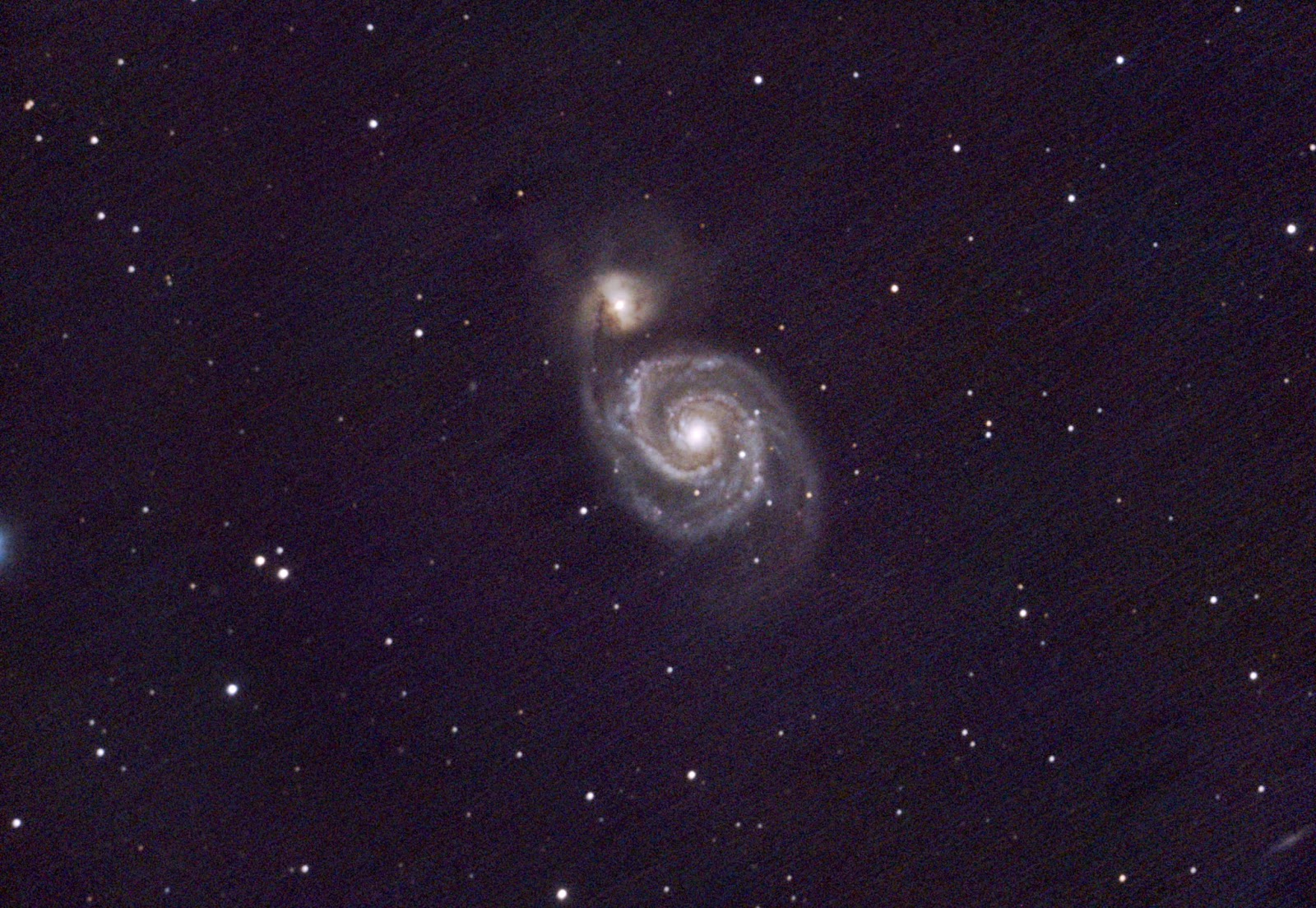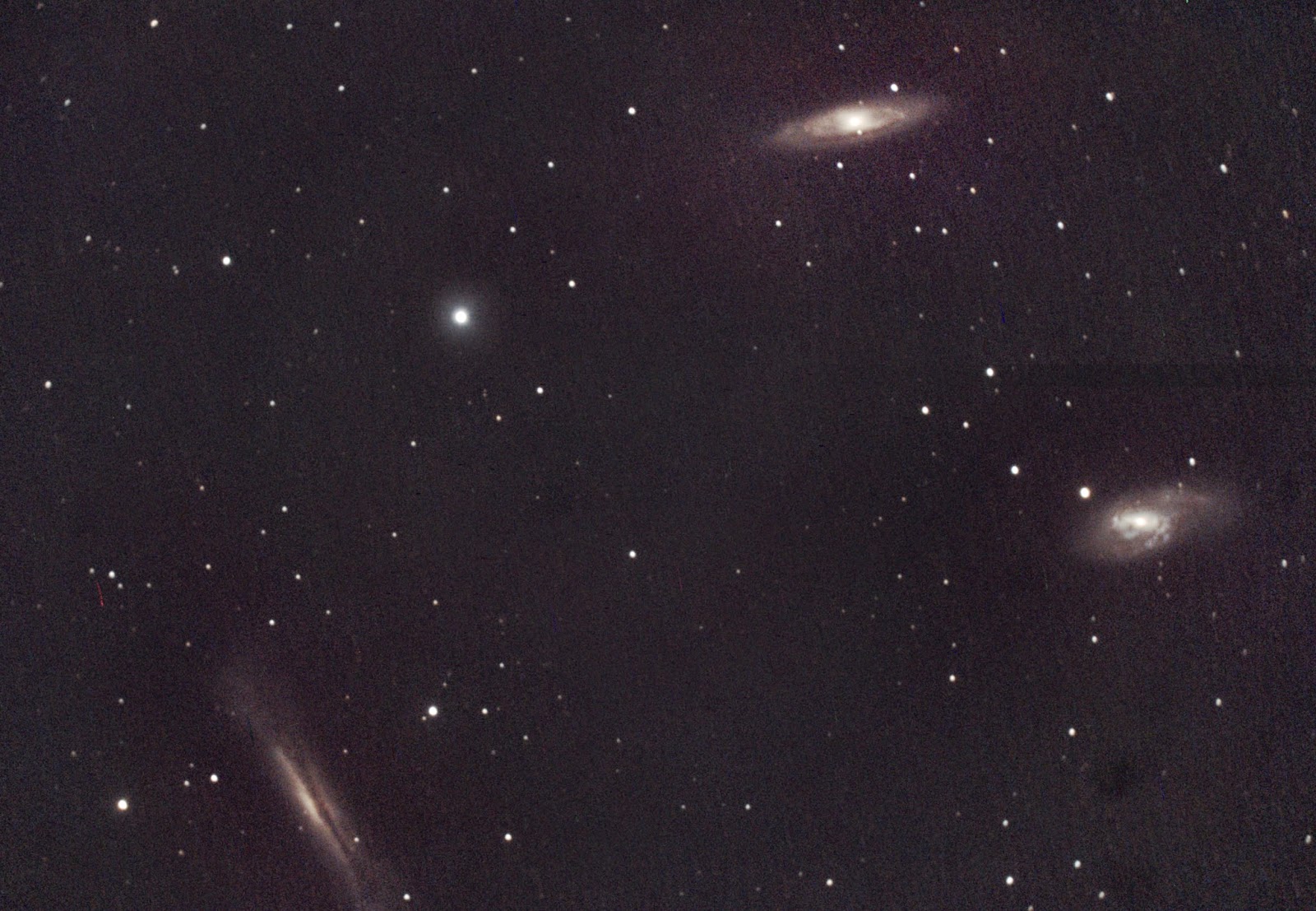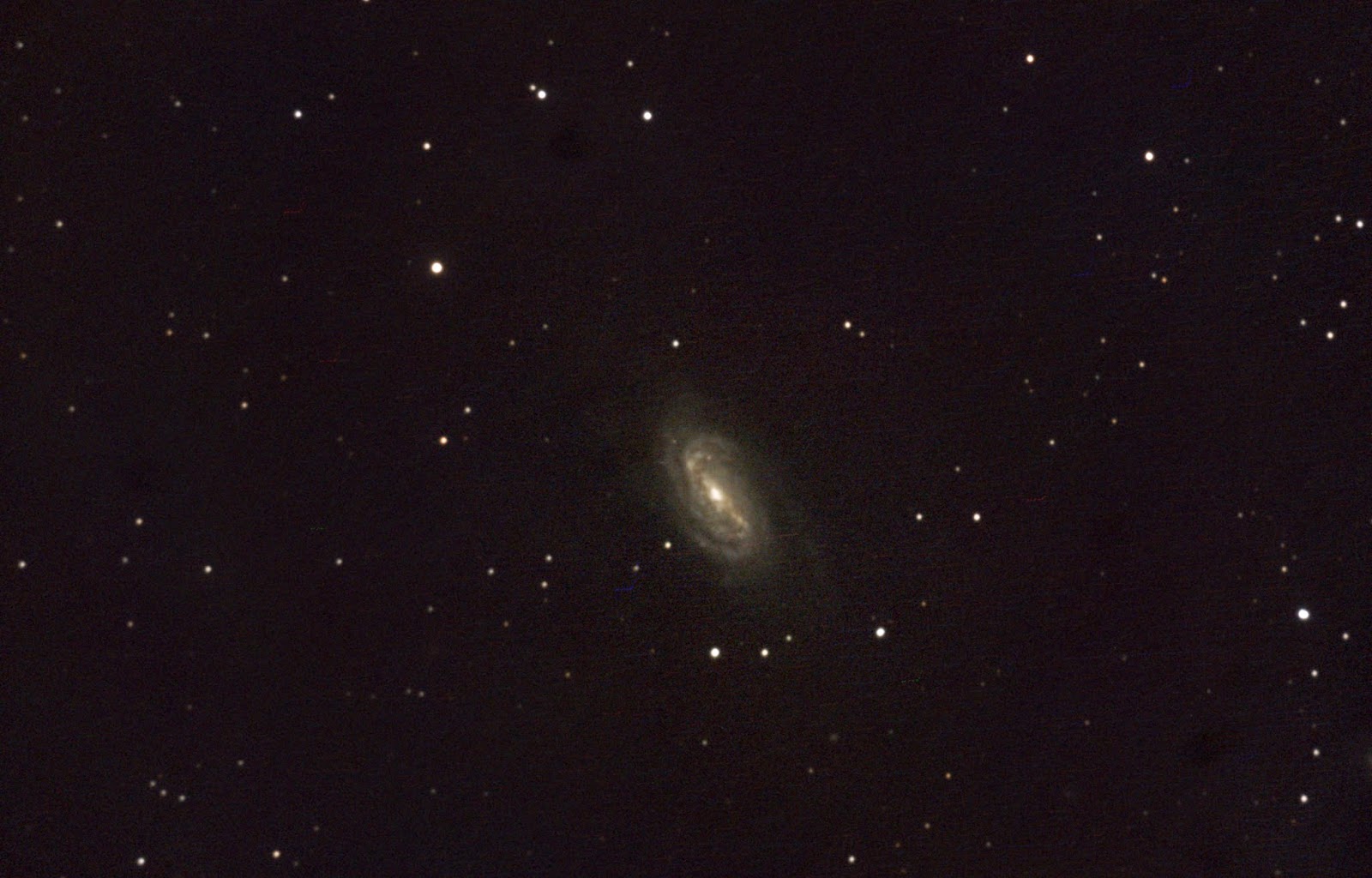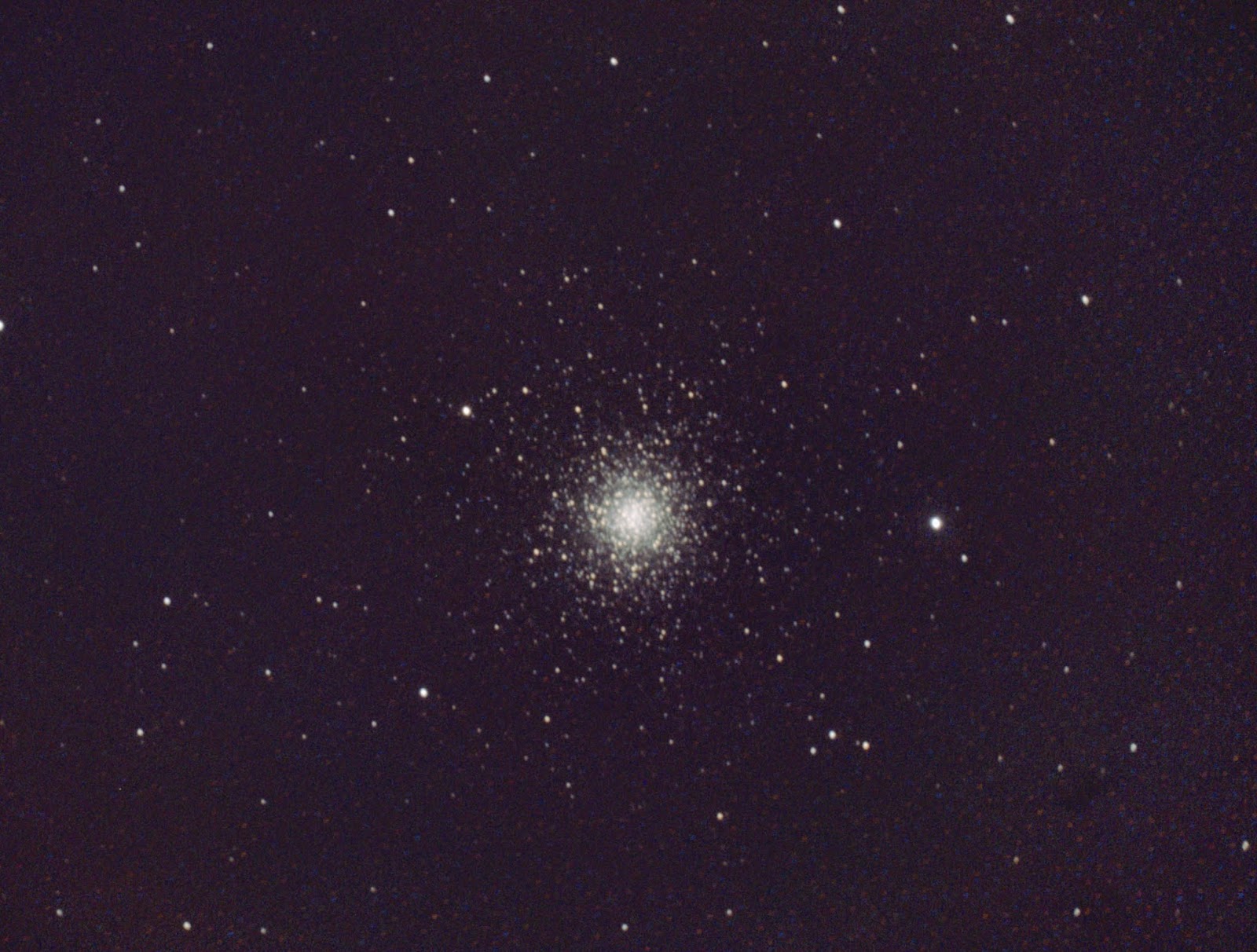Spring is in the air and the night sky is filled with galaxies.
M51 - The Whirlpool Galaxy
First noted by French astronomer Charles Messier in 1773, this "nebula's" spiral structure wouldn't be detected until the Earl of Rosse observed it in 1845. Today, we know that this "spiral nebula" is in fact a vast conglomeration of billions of stars, gas and dust, a galaxy, located roughly 23 million light years distant in the spring constellation Canes Venatici.
This is undoubtedly the best image of M51 that I have taken so far, and it is the first I've shot at f/10 though the 8" Schmidt-Cassegrain. The image is composed of 53, 120-second sub-exposures, taken on the night of March 12, for a total exposure time of 106 minutes. It is my intention to acquire several more hours of exposure time for M51 over the coming weeks.
M65, M66 & NGC3628
Three galaxies in the same field of view. M65, which appears at the top of the image is about 35 million light years away, while M66, on the right edge of the image, is about 36 million light years away. NGC3628, located about 35 million light years away, is at the lower left edge of the image. All three -- known as the Leo Triplet -- are spiral galaxies and appear in the constellation Leo.
M65 and M66 were discovered by Charles Messier around 1780, while NGC3628 was first noted by William Herschel in 1784.
This image comprises 23, 120-second sub-exposures taken through the 8" Schmidt-Cassegrain at f/6.3 on the night of March 11, for a total exposure time of 46 minutes.
NGC2903
First noted by William Herschel in 1784, NGC2903 is a relatively bright barred-spiral galaxy located about 30 million light years away, appearing in the constellation of Leo.
The above image was composed from 25, 120-second images, taken through the 8" Schmidt-Cassegrain at f/10 on the night of March 12.
M3
This ancient globular cluster is thought to contain about half a million stars. It's age has been estimated at eight billion years. Charles Messier first noted it in 1764. Almost 34,000 light years away, it appears in the constellation Canes Venatici.



